Sacramento Hall of Justice
Introduction
Text-to-speech Audio
Completed in 1917, the Sacramento Hall of Justice is a Beaux Arts/Neoclassical building designed by the architectural firm of Shea and Lofquist. Built at the height of the City Beautiful Movement, the steel frame building was constructed from stone and brick with ornamental terra cotta details. Throughout the 20th century, it served as a police office, a city courthouse, a prison, an emergency hospital, and a laboratory. The Sacramento Hall of Justice was added to the National Register of Historic Places in 1999. In the early 21st century, a major adaptive reuse project included a four-story addition built with steel and glass, successfully juxtaposing the modern with the classical.
Images
The Sacramento Hall of Justice was constructed in 1917.
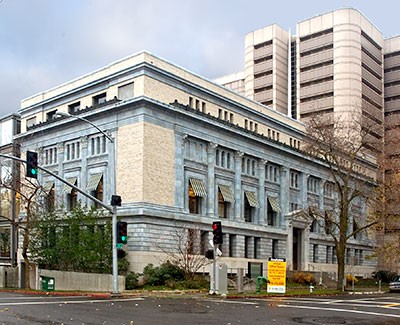
The "Hall of Justice" inscription above the entrance
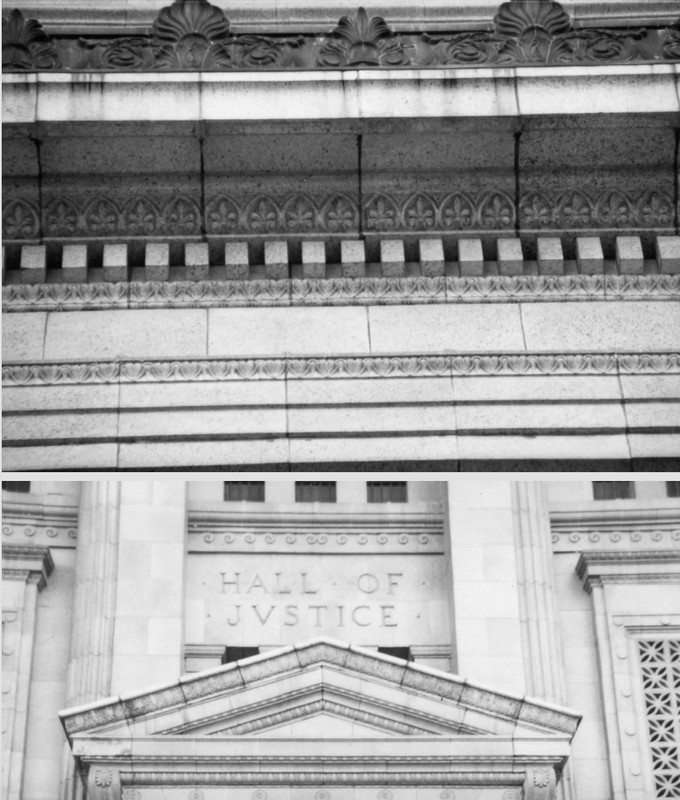
Architectural details on the facade
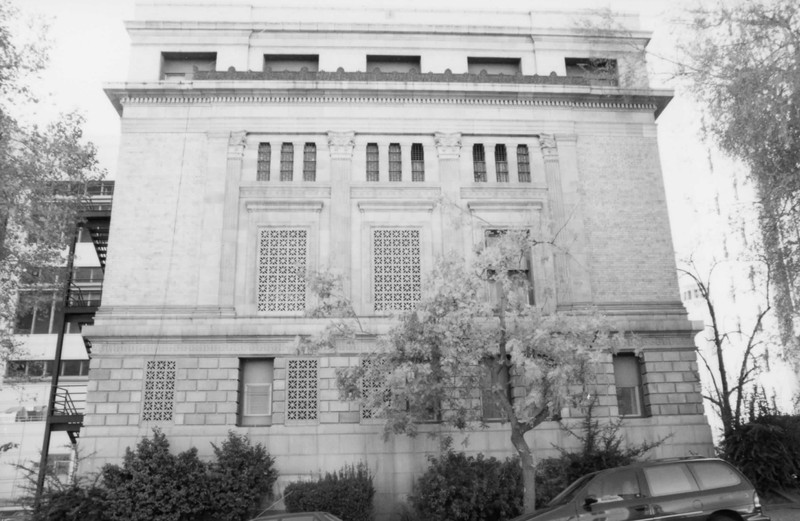
An interior staircase
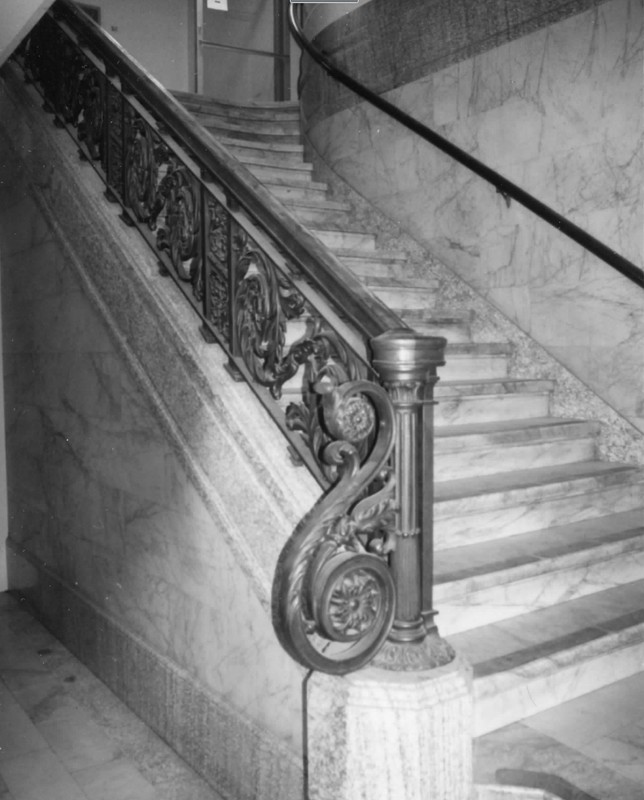
The Sacramento Hall of Justice, following a 2002 adaptive reuse project by Barton Myers Associates
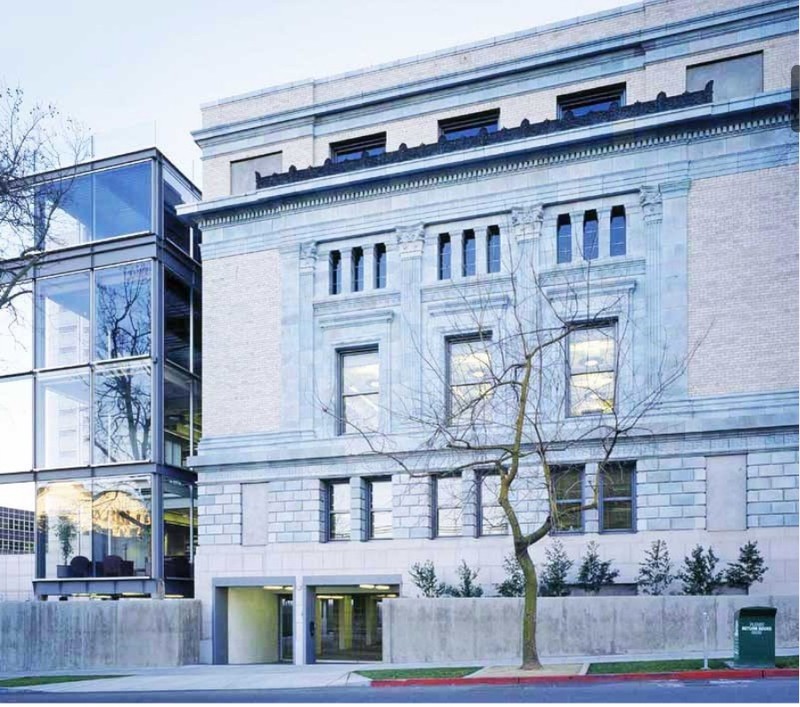
Backstory and Context
Text-to-speech Audio
Built in the Beaux Arts/Neo-Classical style, the Sacramento Hall of Justice was designed by the architectural firm of Shea and Lofquist in 1917 at the peak of the City Beautiful Movement. Intended to instill civic pride, the building’s design incorporated classical motifs and conveyed a strong sense of history and place. Neo-Classical architecture was based on Greek and Roman designs, reflecting monumentality, symmetry, and restraint. The influence of the Beaux Arts style on Neo-Classical architecture, in particular, was based upon the French Classical style taught at L’Ecole des Beaux Arts in Paris during the 19th century. This style drew upon 17th- and 18th-century architecture that revitalized Classical designs from antiquity combined with eclectic decorative elements.
Currently, there are only a handful of civic buildings constructed in the Beaux Arts/Neo-Classical style that are still standing in Sacramento. These structures include the Beaux Arts City Hall building, designed in 1911 by Rudolph Herold, and the Neo-Classical Bank of D.O. Mills designed in 1912 by Willis Polk. They also include Sacramento’s Library & Courts Building (1925) and Office Building One (1928), which face each other across a circular courtyard with a decorative fountain in between them. Sacramento’s Hall of Justice initially served as a police office, a city courthouse, and a prison, and the building was later converted into an emergency hospital and a chemical laboratory. For its architectural and cultural significance, the property was added to the National Register of Historic Places in 1999.
In the early 21st century, an adaptive reuse project was completed at the Sacramento Hall of Justice by the architects and preservation specialists, Barton Myers Associates. A four-story addition was designed using a contemporary steel frame and glass. This new structure was constructed adjacent to the original stone and brick building. Along with a seismic retrofit to prevent potential damage from future earthquakes, the adaptive reuse project successfully incorporated the modern with the classical, creating a striking juxtaposition of architectural styles side by side. The Sacramento Hall of Justice received a 2002 Design Award from the California Preservation Foundation for its significant achievements in design, historic preservation, and adaptive reuse.
Sources
"California SP Sacramento Hall of Justice: Nomination Form, National Register of Historic Places," National Archives. September 24th, 1999. Accessed September 7th, 2023. https://catalog.archives.gov/id/123860656.
"National Register #99001179: Sacramento Hall of Justice", Noe Hill. Accessed September 7th, 2023. https://noehill.com/sacramento/nat1999001179.asp.
"Sacramento Hall of Justice", Barton Myers. Accessed September 7th, 2023. http://www.bartonmyers.com/HOJ_01.htm.
Noe Hill
Nomination Form, National Register of Historic Places
Nomination Form, National Register of Historic Places
Nomination Form, National Register of Historic Places
New Theme / Barton Myers Associates
